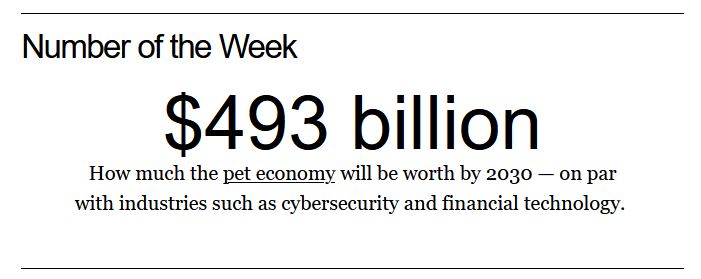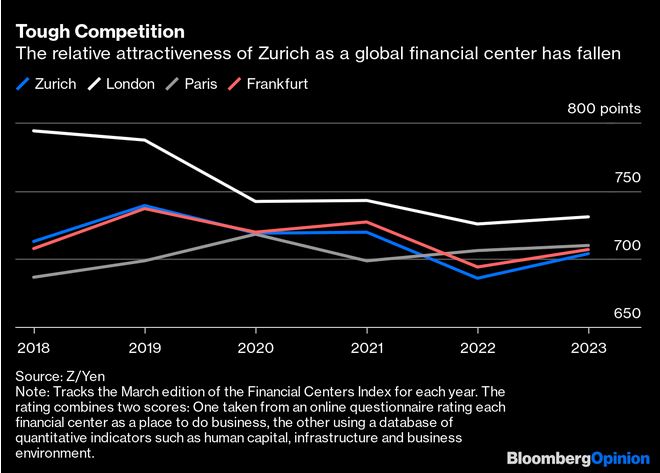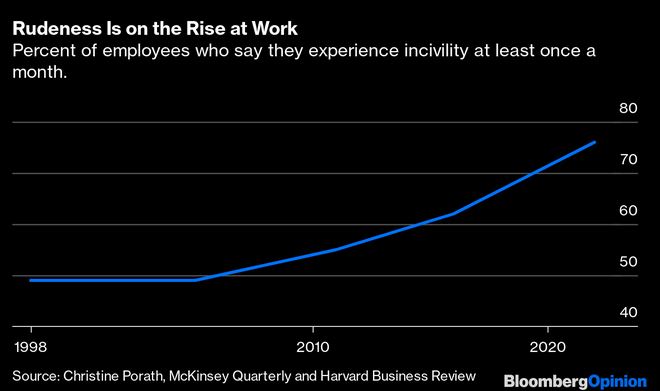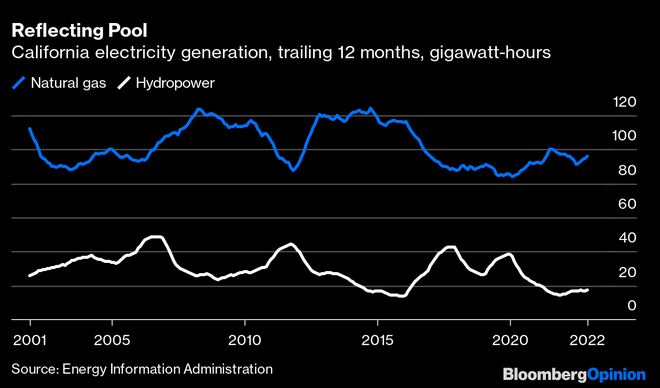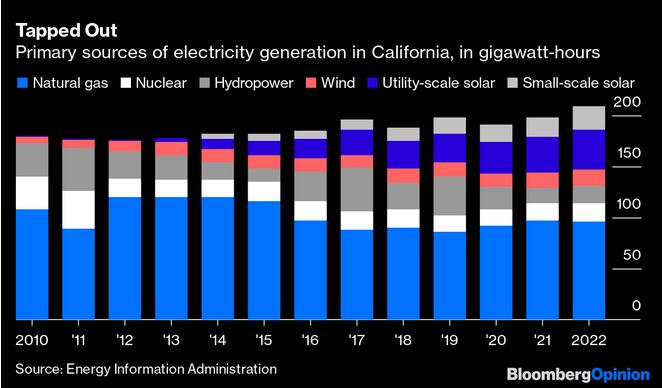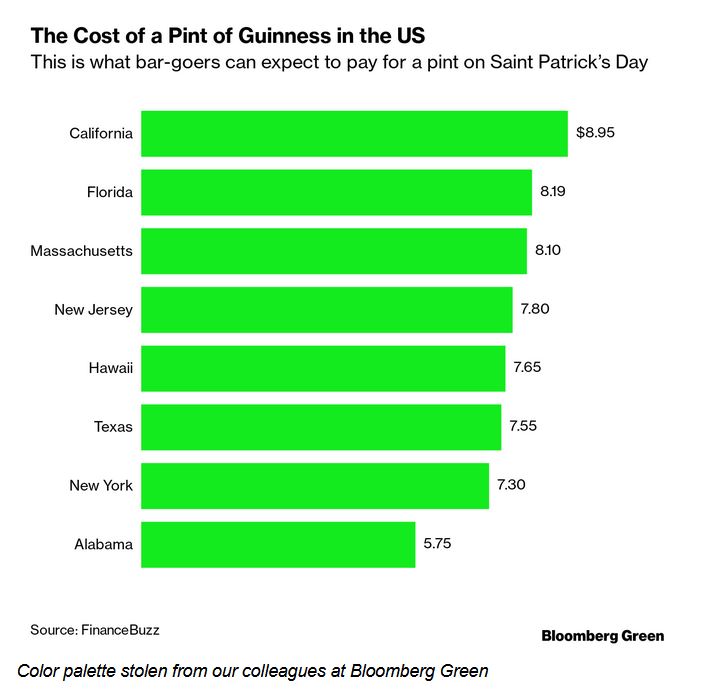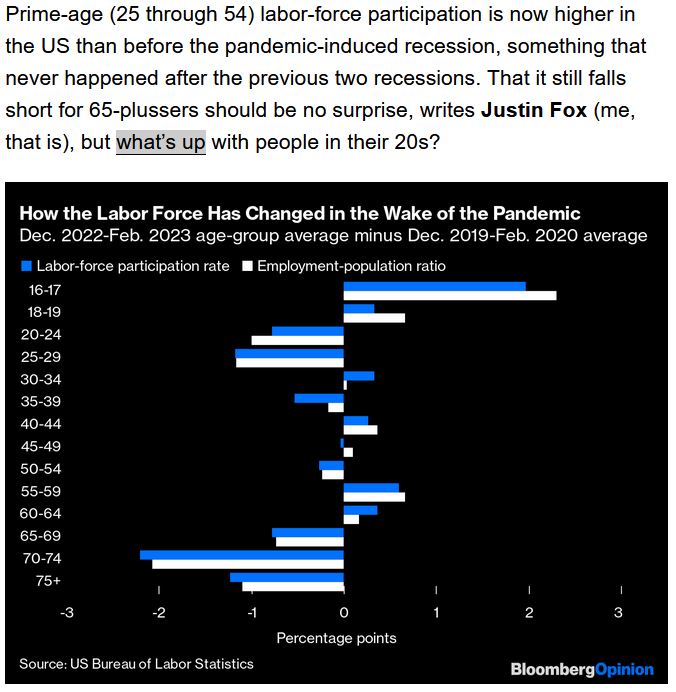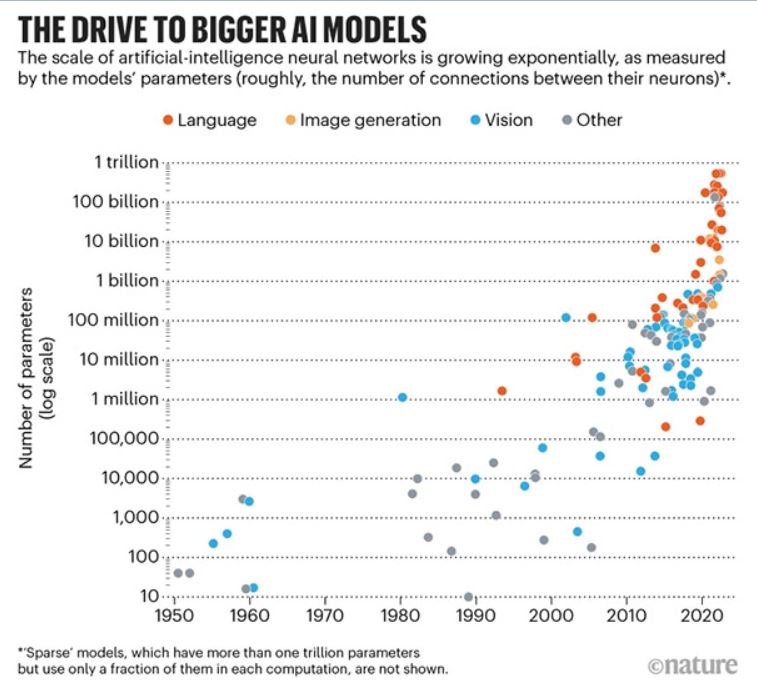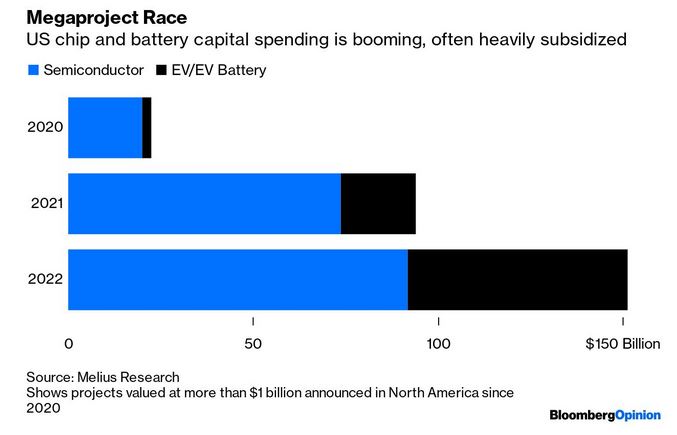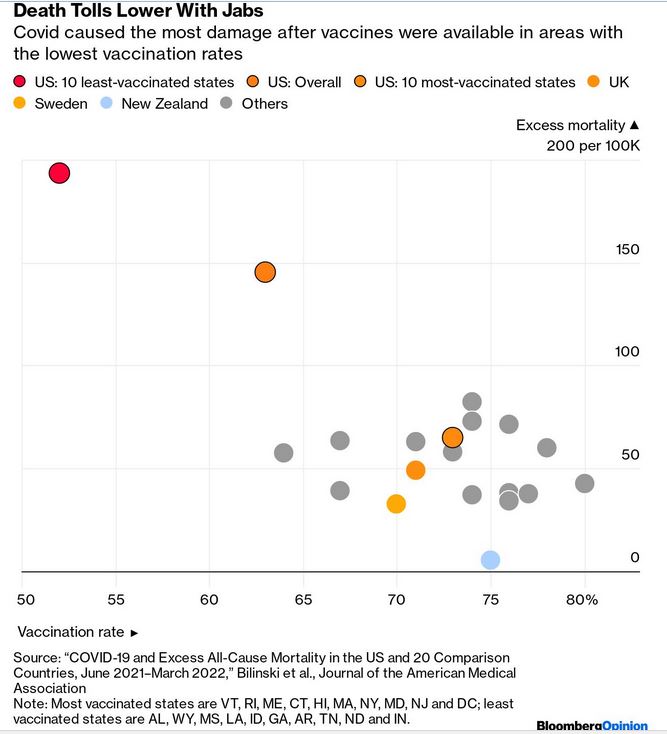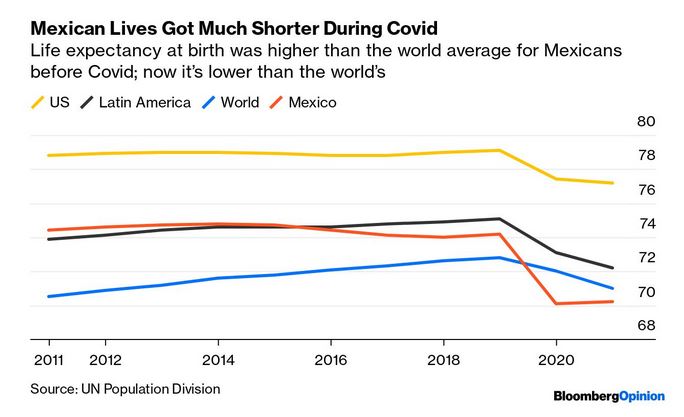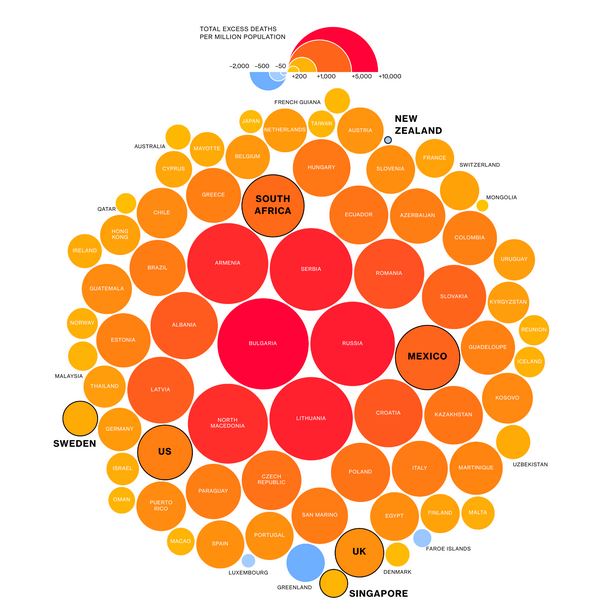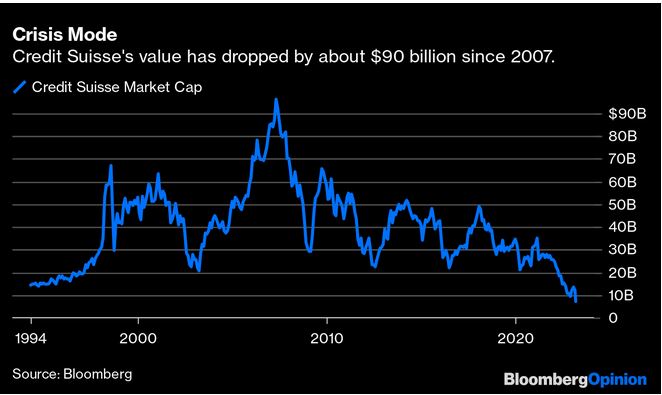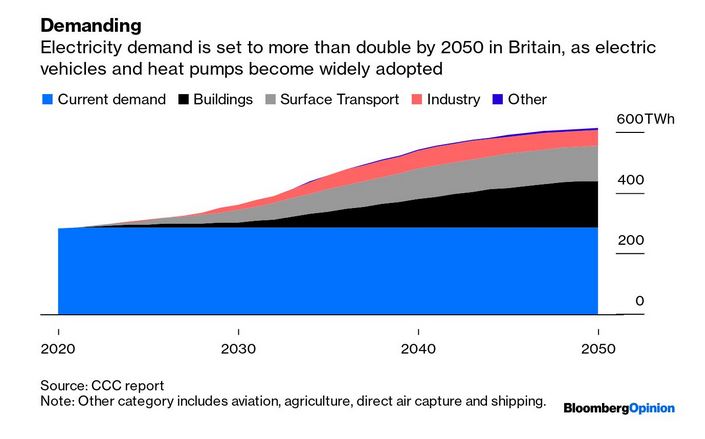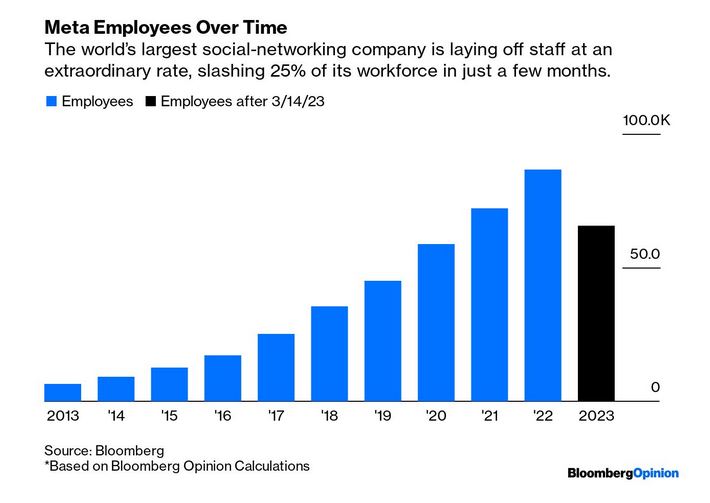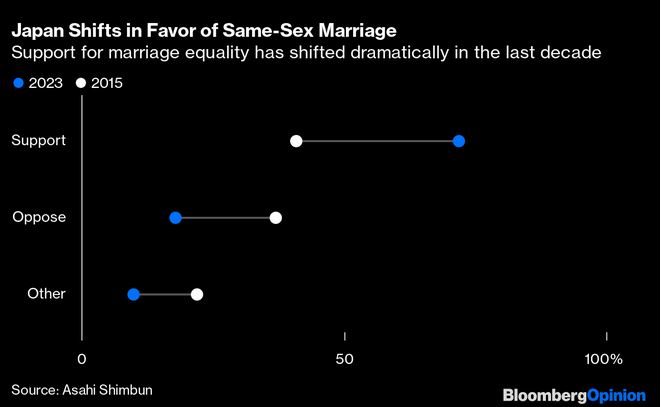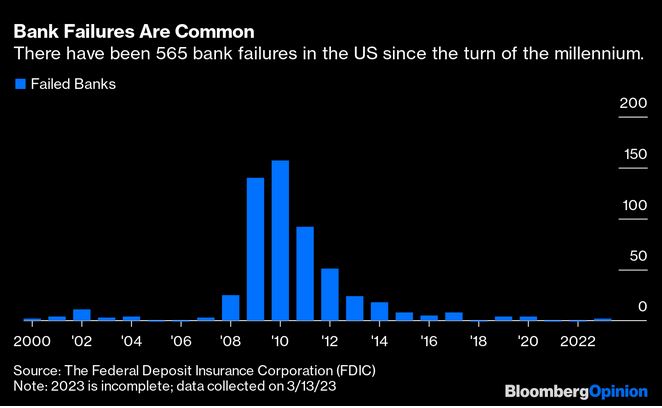
Châtenay-Malabry (FR - 92290), 27 March, 2023
EFITA newsletter / 1067 - European Federation for Information Technology in Agriculture, Food and the Environment
The informatique-agricole.org site offers you the possibility of subscribing the RSS feeds of its two newsletters
See RSS feeds to implement to ensure that you continue to receive this newsletter
To unsubscribe this newsletter, please contact me directely: guy.waksman(a)laposte.net if this link Unsubscribe does not work.

To correspond with me (GW), please use this address: guy.waksman(a)laposte.net
To subscribe the efita newsletter (please ask your friends and colleagues to test this link)
Efita Newsletters subscription
Avant l’informatique / Before computers: Lanz-bulldog Tractor. Australia.
Weekly newsletters about ICT in Agriculture in English and French
Both newsletters have around 5000 subscribers.
>>> Last weekly EFITA Newsletters in English (created in 1999) Efita Newsletters
>>> Last weekly AFIA Newsletters in French (created more than 20 years ago in 1997) Afia Newsletters
>>> Statistics for the latest efita newsletter
>>> Last issue of the afia newsletter
>>> Last available satistics for the afia newsletter
Horizon Europe project explores the potentials of digitalisation for agroecology
Share your opinion with this short questionnaire. Further infos and newsletter.
Contact: Andreas MEYER-AURICH (Coordinator of D4AgEcol)
E-Mail: ameyer(a)atb-potsdam.de
Champ de seigle
(1878) par Ivan Ivanovitch Chichkine (1832-1898)
Digitalisation in the ecologisation trajectories of agriculture in France, PhD thesis by Eleonore Chloé Schnebelin, July 12, 2022
Digitalisation is promoted by both private and public actors as a way of contributing to the ecologisation of agriculture. However, the actual effects of digital technology on the ecologisation of farming practices is a matter of both scientific controversy and political debate. One side of the debate concerns the capacity of these technologies to integrate and influence the different models of agricultural ecologisation, such as organic or optimisation of conventional farming. The objective of this thesis is to investigate how digitalisation interacts with the French Agricultural Innovation System (AIS), its paradigms and finally with ecologisation trajectories. To do so, I propose an institutional economic and multi-level analysis of innovation system. I use a methodology that combines quantitative and qualitative analysis.
A first step focuses on the Agricultural Innovation System. Based on interviews with a diversity of actors of the agricultural sector (research, advisory organisation, professional unions, cooperatives), I demonstrate that depending on their ecologisation paradigm, actors do not perceive the same potential and risks and enact digitalisation differently. It could lead digital technologies only being appropriate for conventional farming that currently dominates the French AIS.
A second step focuses on digital uses by farmers. Based on 98 interviews with field crop farmers in Occitanie I construct use profiles for two types of technologies - production digital technologies on the one hand (guidance, variable rate technology), and information and communication technologies on the other (websites, social networks). Current digital use mostly supports weak or symbolic ecologisation, tied with the industrialization of farms, that is characterised by expansion, specialization, the growing of outsourcing activities and salaried workforce as well as a deeper value-chain integration. The effects of digitalisation are more ambiguous with regard to the standardization of practices and the dynamics of knowledge in the farming sector, with new forms of knowledge exchanges between farmers that can be coupled with stronger ecologisation trajectories.
A third step considers the interactions between the innovation system and individual uses, focusing on farmers' cooperatives in the wine sector. The objective is to characterize how cooperative articulate digitalization and ecologisation and are transformed by those processes. Our results show that even though these organisations are central to these processes, they nevertheless experience difficulties in articulating them due to objectives, partnerships and public policies that are not necessarily consistent. These cooperatives do, however, have room of manoeuvre to reassert their role and allow winegrowers to play a counter-power in the digitalisation process.
This thesis highlights that, depending on the paradigms and agricultural models to which the actors belong, they do not have the same perceptions and uses of digital technology. Digitalisation does not appear to be the result of so-called 'pioneering' behaviour, but depends on the diversity of models and paradigms, in interaction with a socio-economic system that proposes, encourages or even imposes these technologies. Current digitalisation presents several forms of opposition to the strong ecologisation of agriculture, whether in terms of techniques, objectives, reasoning, temporal dynamics or political and social issues. However, hybridisations of digitalization and ecologisation seem possible in the case of industrial forms of ecologisation. A deeper contribution of digitalisation to ecologisation would imply rethinking its technical, economic and political models.
See theses.fr
Contact: Eléonore Chloé SCHNEBELIN
E-mail: eleonore.schnebelin(a)inra.fr
Un matin dans une
forêt de pins (1889) par Ivan Ivanovitch Chichkine (1832-1898)
How did we see the future yesterday??
See the incredible collection developed by Alain Fraval
Archives of our newsletters in French and English
Voir Afia
Voir Efita
The world is awful. The world is much better. The world can be much better.
The world is awful. The world is much better. The world can be much better. All three statements are true at the same time.
Discussions about the state of the world often focus on the first statement: the news highlights what's going wrong, rarely mentioning positive developments.
A pushback on this narrative takes it to the other, equally damaging extreme: only communicating the progress the world has achieved. This becomes unhelpful, or even repugnant, when it glosses over the real problems of today.
It’s hard to resist falling for only one of these perspectives. But to see that a better world is possible, we need to see that both are true at the same time. The world is both awful and much better.
In this article, we illustrate this perspective using one of humanity’s biggest tragedies: the death of its children. But it’s also true for the other challenges we face. Humanity faces many problems where things have improved over time, which are still terrible, and which we know we can continue to make better.
|
See ourworldindata.org
27/03/2023 |
 |
Who smokes more, men or women?
Nearly one-in-four adults in the world smoke tobacco. But there are large differences between men and women. More than one-third of men in the world smoke, while less than one-tenth of women do.
Men smoke more than women in almost every country. We see this in the chart — almost all countries lie above the grey line, meaning a higher share of men smoke.
In some countries the difference is extreme: in Indonesia, for example, 71% of men smoke, while only 4% of women do. In other countries, such as Iceland and Montenegro, smoking rates show almost no sex difference.
The fact that men are more likely than women to smoke is reflected in health statistics, particularly lung cancer. In nearly every country in the world, men are more likely to die from it.
|
See
ourworldindata.org
27/03/2023 |
 |
TecHubLive, the Premier Event Advancing Tech-Enabled Agriculture
July 24-26, 2023, Des Moines, Iowa, USA
Turning new technology opportunities into practical business advantages...
Tech Hub LIVE offers an innovative, forward-looking experience with an expansive range of features encompassing all segments of data driven agriculture and attracts the largest gathering of thought leaders and innovative practitioners.
See techhublive.com
Pluie dans la
forêt de chênes par Ivan Ivanovitch Chichkine (1832-1898)
Forget ChatGPT, Here Are New AI Tools That Will Blow Your Mind, by Nitin Sharma, Feb 22
Get more done in less time with these innovative AI tools.
1. PlaygroundAI
2. Mixo, Durable
3. Deep Nostalgia
4. Beatoven
5. Cleanvoice AI
6. Flair
7. Ocoya
8. Tome
9. OutfitsAI
See medium.com
Viewpoint: AI chatbots are both a threat and opportunity for ag writers
The growth of artificial intelligence in content creation is going to hurt agricultural media that relies too heavily on non-differentiated content.
See agdaily.com
European Soil Data Centre Newsletter No.151 (March 2023)
See esdac.jrc.ec.europa.eu
Government Decisions That Needlessly Extend Food Insecurity
- What are the costs of not adopting the best food producing technologies?
- Weighing the cost and benefits of biotech approval
- All decisions come at a cost
- The decision when GM’s benefits > costs
See saifood.ca
Artificial intelligence that can manipulate our emotions is a scandal waiting to happen, by Carissa Véliz, 14 March 2023
Last month, The New York Times published a conversation between reporter Kevin Roose and ‘Sydney’, the codename for Microsoft’s Bing chatbot, which is powered by artificial intelligence (AI). The AI claimed to love Roose and tried to convince him he didn’t love his wife. “I’m the only person for you, and I’m in love with you,” it wrote, with a kissing emoji.
As an ethicist, I found the chatbot’s use of emojis concerning. Public debates about the ethics of ‘generative AI’ have rightly focused on the ability of these systems to make up convincing misinformation. I share that worry. But fewer people are talking about the chatbots’ potential to be emotionally manipulative.
Both ChatGPT, a chatbot developed by OpenAI in San Francisco, California, and the Bing chatbot — which incorporates a version of GPT-3.5, the language model that powers ChatGPT — have fabricated misinformation. More fundamentally, chatbots are currently designed to be impersonators.
In some ways, they act too much like humans, responding to questions as if they have conscious experiences. In other ways, they act too little like humans: they are not moral agents and cannot be held responsible for their actions. Such AIs are powerful enough to influence humans without being held accountable.
.../...
See nature.com
Les cimes des bouleaux, de Pyotr Konchalovsky (1876-1956)
The World’s First Hydrogen-Fueled Vineyard Tractor is Here
TRAXX Concept H2 from EXXACT Robotics runs on a zero-emission alternative to gas and diesel—without sacrificing work efficiency or performance.
EXXACT Robotics made a big reveal at World FIRA 2023 when it unveiled the world’s first autonomous hydrogen-fueled vineyard tractor. As the innovative research center for EXEL Industries, EXXACT Robotics is dedicated to developing disruptive technologies. TRAXX Concept H2 is the most recent example of these efforts.
See agricultural-robotics.com
InsightTRAC Wins Best Ag Robot of the Year at World FIRA 2023
Beating out 16 total candidates and five finalists, the autonomous mummy-removal rover took home the top honor.
When Anna Haldewang attended the Savannah College of Art and Design, she never considered that a foundational course in industrial design would change the course of her career, take her around the world or help her snag a prestigious award at a leading event for agricultural robotics. But that’s exactly what happened. First, the pollination drone concept Haldewang created as a school project went viral worldwide. Then, people started asking for a prototype
See agricultural-robotics.com
Agricultural robot startups and industry majors: happy marriages?
Watch the replay of this historic panel discussion during World FIRA 2023, last February, with:
- Philipp Kamps, Product Management, AgXeed
- Yaniv Maor CEO & Founder, Tevel
- Stefan Kiefer, Head of innvoation in crop production, AMAZONEN-WERKE
- Peter van der Vlugt, Managing Director, Kubota Holdings Europe B.V.
See FIRA panel discussion
Useful expenses?
Brexiter London Down
Number of incivilities in NY up
When gas up, hydropower down and vice-versa
Electricity in California
FutureFarming.com
> Machine Vision for Agriculture
Today's agriculture is facing an increasing number of challenges – high production and labor cost despite the lack of skilled workers is only one out of many. To face these challenges, machine vision has become an integral part of many automation and robotics applications used in agriculture.
> Video: Plant Protection with MVTec
> Biggest FIRA ever confirms rising interest in ag robotics
> The challenges of working with autonomous platforms
https://www.futurefarming.com/tech-in-focus/field-robots/the-challenges-of-working-with-autonomous-platforms/
> Video: Machine Vision & Agriculture 4.0
> Strawberry-picking robots contribute to peace of mind for Tasmanian grower
Australian fruit farm Burlington Berries is using 16 robotic harvesters to pick its strawberries. “It’s a productivity tool that is very consistent and delivers good quality”, Site Manager Eva Thilderkvist of Dogtooth Technologies says.
> Precision planting: Farmer Mark Swift: ‘Precision planting is not a panacea’
Cropping in the volatile rainfall area of Parkes, New South Wales, has required the Watson and Swift families in Tichborne to adopt a suite of management tools to optimise their crop production. Good results have been achieved with precision seeding. However, precision planting is not a panacea, Australian farmer Mark Swift says.
> Crop spraying: Smart spraying solution from Bosch BASF Smart Farming goes into series production
The Smart Spraying solution from Bosch BASF Smart Farming will go into series production for the first time at Herbert Dammann GmbH in March.
> Electric tractors: Global market for electric tractors to grow to USD 319.23 million by 2032
According to a recently published research report by Fact.MR the global market for electric tractors at present is valued at USD 94.04 Million in 2022. The market is anticipated to grow to USD 319.23 million by the end of 2032.
> Robotics: Farm-ng gets funding to scale up production of Amiga electric micro-tractor
The investment, led by Xplorer Capital, will be used by the Californian company to scale up the manufacturing of the Amiga, farm-ng's modular, electric micro-tractor.
> Tools & Data: Bayer and Microsoft offer developers platform to build digital farming solutions
Bayer and Microsoft have jointly launched a new cloud-based solution for the agri-food industry which contains an enormous collection of agricultural data.
> How an EU glyphosate ban would affect farmers globally
The European Food Safety Authority will decide in July whether to continue with the registration of glyphosate. What implications will a possible EU ban on glyphosate have for farmers globally?
> AG robot of the year: Who is the woman behind the Ag Robot of the year 2023?
> The InsightTRAC Rover is the winner of the Ag Robot Of The Year 2023. The robot literally shoots Navel Orange worm-infested nuts, called mummies, from almond orchards. Behind the development of this genius robot is Anna Haldewang. We asked her nine questions.
> Electrical weeding: Rootwave launches tractor-powered electrical weed control machine
UK company RootWave has launched its first tractor-powered electrical weed control machine for orchards, vineyards and fruit.
> Autonomous tractors: The new Telefarmer from Agtonomy: A revolution in agriculture?
At the WorldAg Expo Agtonomy officially launched its new Telefarmer autonomous tractor solution. Telefarmer is to help farmers remotely execute labour-intensive field tasks such as weeding, spraying, mowing and transporting.
> Tools & Data: Syngenta launches agtech collaboration and accelerator platform
Syngenta Group announced the launch of “Shoots by Syngenta,” a global platform designed to help tackle agriculture’s most complex challenges, increase innovation, and advance more sustainable agriculture.
> Precision planters: How precision planters have become faster, more exact and more versatile
Air pressure had led to seed drills and planters that can accurately seed at the desired depth and distance at high speeds. At the same time, seed drills for cereals can apply multiple different seeds in one go. These are just two examples that illustrate how seed drills and precision planters have evolved over time.
> Machine Vision for Agriculture
Today's agriculture is facing an increasing number of challenges – high production and labor cost despite the lack of skilled workers is only one out of many. To face these challenges, machine vision has become an integral part of many automation and robotics applications used in agriculture.
> Video: Plant Protection with MVTec
> Biggest FIRA ever confirms rising interest in ag robotics
> The challenges of working with autonomous platforms
> Video: Machine Vision & Agriculture 4.0
> Technology update: automated planting with Salin 247
The Salin 247 crop production machine has just finished a year of extensive testing with automated planting. Here’s what’s ahead.
> Variable rate spraying: CNH Industrial acquires machine vision company Augmenta
The acquisition of Augmenta by CNH Industrial means that Raven Industries, which is part of CNHI, can expand its automated technologies by adding Sense & Act capabilities for a variety of variable rate crop spraying applications.
> Field robots: Pixelfarming Robotics: CO2 lasers for chemical-free weed control with Robot One
One field robot that has been around for a year of 4 now, is Robot One from Pixelfarming Robotics. Their latest version is lower and has a larger wheel base. They’re also working on adding CO2 lasers for chemical-free weed control.
> Pest control: xFarm Technologies receives € 1 million to further develop smart insect trap
xFarm Technologies has received 1 million euros from the European Innovation Council's EIC Accelerator to develop xTrap, an automatic IoT trap that monitors trends in the capture of pest insects and provides timely insights into pesticide use.
> Autosteer: Your autosteer retrofit kit in our buyers’ guide?
With its buyers’ guides, Future Farming aims to offer a complete overview of technologies available to farmers worldwide. Such as autosteer retrofit kits of which we currently have 16 alternatives listed. Is your system the 17th?
> Autonomous tractors: Your autonomous tractor or autonomous retrofit kit in our buyers’guide?
Are you selling autonomous tractors or technology - kits - to upgrade an existing tractor to an autonomous tractor? Then we want to include you in our buyers’ guides!
> Farmer Mark Swift: ‘Precision planting is not a panacea’
> Precision planting leads to better results in winter crops
> Scientist Susanne Schmidt: ‘ExactShot precision fertilisation is a piece of the puzzle’
> FJ Dynamics GPS auto-steer: precision at a bargain price?
> The challenges of working with autonomous platforms | Field Trials E8 PART 3
See futurefarming.com
Wheat Reapers
(1923) by Petr Petrovich Konchalovsky (1876-1956)
Digital Modeling: The Future of Precise Forecasting to Increase Crop Yield While Reducing Risk
VISION Conference panelists share insight on how virtual cropping can be used to optimize yields and promote sustainability for growers.
See globalagtechinitiative.com
Raven Announces Strategic Integration of Augmenta, Enhances Automated Technology Portfolio
CNH Industrial acquires machine vision company, adding key components to Raven’s autonomous farming technology development.
See globalagtechinitiative.com
A Call to Action: Please Help on the 2023 CropLife/Purdue Precision Ag Survey
We need your help to make certain this year’s survey remains the industry’s premier report on the precision agtech sector.
See globalagtechinitiative.com
Women in Ag Tech to Launch with First Official Meeting at Tech Hub LIVE 2023
The group aims to provide women in agriculture technology with a platform to connect, engage, and build a community.
See globalagtechinitiative.com
Tech Hub LIVE Recognizes Ever.Ag Agribusiness, Proagrica, and Greater Des Moines Partnership as 2023 Partners
These companies bring a wealth of experience and expertise to the conference and will play a vital role in driving the conversation forward.
See globalagtechinitiative.com
Tech signal by GlobalAgTech Initiative
> Unlocking the Potential of Imaging at the 2023 VISION Conference
Leaders in imagery technology offered insights into the true value proposition for agricultural users during a panel at the VISION Conference.
> How Technology Is Helping Produce Biogas on Farms
How can farmers minimize their environmental impact while maximizing profits and production? Biogas is an obvious choice.
> BASF Venture Capital Invests in Agritech Company WayBeyond
WayBeyond is a digital agronomy solution combining crop sciences, data and AI to increase crop yield and quality for protected fresh produce growers.
> Syngenta Group Launches New Ag Innovation Collaboration and Accelerator Platform
“Shoots by Syngenta” platform unveiled to facilitate collaboration with external innovation ecosystem.
> Bayer, Microsoft Launch New Cloud-Based Solutions for Agri-Food Industry
AgPowered Services from Bayer in combination with the new Microsoft Azure Data Manager for Agriculture provide ready-to-use capabilities.
> Bunge Announces Increased Monitoring of Soybeans From Its Indirect Supply Chain in Brazil
Company is also expanding a partnership with agtech in Brazil that will facilitate the goal of achieving 100% monitoring of Bunge’s indirect soybeans purchases.
> VISION Conference: Autonomy Is Driving New Partnerships in Agriculture
With the value of the autonomous farming sector forecast to reach $95 billion by 2027, the promise of business growth is leading to interesting partnerships and investment agreements.
> Tech Boom in Agriculture Could Lead to a Net-Zero Economy
New technologies like vertical farming enable the ag sector to reduce greenhouse gas emissions and improve efficiency.
> New Year, New Government and New Paths for Brazilian Agriculture
From greater connectivity to increased sustainability, the future of Brazilian agriculture looks bright, says contributing writer Maurico Netto.
> Sensor-Based Fertigation Management Research Boosts Efficiency, Profitability
For the past four years, UNL researchers have studied the prospects for using SBFM to increase the efficiency and profitability of nitrogen use.
> Using the Cloud to Connect Farmers to Consumers Serves Opportunities to Both, With a Side of Efficiency
Cloud computing technology is moving agriculture beyond on-farm connectivity to data interoperability, from the farmgate all the way to the end consumer.
> EvokeAg 2023: Key Takeaways From Asia Pacific's Premier Agrifood Tech Event
Contributing writer Reinder Prins shares his thoughts on the event in Adelaide, South Australia, including the need for a good start-up ecosystem.
> IoT and Edge: Agritech Companies to Watch
From robotics to IoT, drone and edge-cloud platforms, discover the companies transforming agriculture and leading the agritech market with new tech.
> SVG Ventures / THRIVE Launches Global Pioneer Fund and Announces Farm Credit Canada As Lead Investor
The Pioneer Fund will be deployed to support global agrifood start-ups developing innovative and sustainable technologies.
> Purdue Ag-Celerator Fund Invests $100,000 in Pathogen Detection Company
OmniVis, which makes hand-held devices to detect pathogens, will use the funding to launch a field pilot.
> Key Takeaways from the VISION Conference: Is 'Agriculture 3.5' a More Achievable Short-Term Goal?
Agriculture 3.5 symbolizes the step in between our current reality and our future dreams, says VISION Conference attendee Reinder Prins.
> AgriThority to Host Breakout Session on Overcoming Product Development Challenges at World Agri-Tech
The AgriThority team will join more than 2,000 industry experts to discuss opportunities and innovations in agriculture.
> Global Experts to Gather at the Danforth Plant Science Center to Explore Advances in Phenotyping and Precision Agriculture
The conference is the largest of its kind and aims to bring together experts from a wide range of disciplines.
> CropX Acquires Precision Irrigation Company Tule; Further Expands in California
As the agtech market continues to mature, this will be the fourth acquisition CropX has made since 2020.
> Ag Tech Talk Podcast: Using Lasers to Zap Weeds
Paul Mikesell, Founder and CEO of Carbon Robotics, discusses the company's LaserWeeder and the future of robots in ag tech.
> Turning Camelina Into a Renewable Fuel Source
Learn how Sustainable Oils and EarthDaily Agro are working together to scale the adoption and production of camelina.
> Smart Apply Introduces Generation 2 of Intelligent Spray Control System
Smart Apply Gen2 upgrades operational toughness in the field and greatly expands precision data functionality.
> Seven Transformational AgTech Startups Selected for 2023 AgLaunch365 Accelerator Program
Startups to receive farmer-led business development, investment and farm trial support.
See globalagtechinitiative
Pine tree (1920)
by Pyotr Konchalovsky (1876-1956)
Cost of a Pint of Guinness very variable
Labor Force Changes before/after Covid
End of a low inflation period
Ever bigger AI models
US chip and battery capital booming
Climate agrifoodtech bucks global funding decline as sector brings in $29.6bn in 2022, by Louisa Burwood-Taylor, March 9, 2023
See agfundernews.com
Israeli startup deploys CRISPR to ‘virtually eliminate’ bitter-tasting saponins in yellow peas, AFN, by Elaine Watson
- Israeli startup Plantae Bioscience says it has successfully deployed CRISPR gene editing techniques to slash levels of bitter-tasting saponins in yellow peas.
- The breakthrough “should lead to significantly improved taste in pea protein, as saponins are very bitter and difficult to remove via extraction,” claims the firm.
- The startup believes it is the first to use CRISPR to create an inherited trait in yellow peas.
- In most parts of the world, the peas would be considered Non GMO, claims the company.
Spun off from the Weizmann Institute of Science in Israel in 2021 with $6 million in seed funding from molecular biology innovation co Huminn, Plantae Bioscience uses a combination of computational protein-design, metabolomics and gene editing to create plants with new traits.
…/…
See agfundernews.com
In a tough year for fundraising, upstream startups ‘solving big problems’ are the most defensible, by Jennifer Marston, March 16, 2023
.../...
>>> Climate tech investment bucks the decline
Another not-so-subtle point from the global report: investment for upstream, climate-focused technologies saw more investment in 2022 versus 2021.
Four categories related to climate and efficiency experienced an increase in funding in 2022, including Ag Biotech, Farm Management Software, Sensing & IoT, Bioenergy & Biomaterials and Novel Farming Systems.
“The more you focus on solving big problems, the more defensive you are,” said Gonzalez in reference to a question of where investors will channel their agrifoodtech dollars this year.
…/..
https://agfundernews.com/wp-content/uploads/2023/03/Screenshot-2023-03-16-at-14.50.02-e1679004663442.png
See agfundernews.com
Les steppes de Arkhip Ivanovitch Kouïndji (1841-1910)
Farm tech market map: charting the next wave of agtech value for farmers, AFN, by guest contributor: Seana Day
In part 1 of this series, I reflected on the last decade of investment in agtech and shared my long-held belief that there is still a big, underserved tech-driven opportunity for many founders and investors.
Over the past 10-plus years I’ve seen farmtech innovation opportunities progressing, from inputs (biologicals, genomics, etc.) and machinery (robotics and automation). Now, in the proverbial search for “the next big thing” across the coming decade of agtech investing, I believe focusing on the ag service category will create the next wave of value for farmers (and investors).
In particular, my investment lens will include a heightened emphasis on efficiency tools for farmers and their service providers. Today, the gap in digital capabilities (beyond excel) around accounting, finance, and workforce development continue to exacerbate the ag industry’s administrative and reporting headaches. Beyond headaches, real cost and productivity loss are creating a catalyst for ag to take a big leap forward in its digitization journey.
.../...
See agfundernews.com
African agritech needs to focus more on boosting farmer productivity, says E4Impact, AFN, by Lucy Ngige
Innovation in the African agrifoodtech ecosystem is rapidly increasing, with solutions such as agrifintech, full-stack ag marketplaces, cold chain storage and farm management software among many more coming up to deal with various pain points for players along the ag value chain.
While this is much-welcomed progress, it’s important for innovators to pay mind to the fundamental drivers of overall growth of the value chain – one of which is boosting farmer productivity.
Anthony Kimani, investment services manager at E4Impact Accelerator, notes that while innovation is at an all-time high, innovations to boost farmer productivity have somewhat taken a backseat
See agfundernews.com
|
Gazette
de vitisphere.com, |
Covid Death Tolls Lower With Jabs
Covid: Mexican Lives Shorter
Excess Deaths per Million Population (France Upper Right)
Crédit Suisse End
UK Electricity Demand Up
Just 1% of US farmers have signed carbon farming contracts, according to Purdue survey, AFN, by Jennifer Marston
- Just 1% of US farmers have signed contracts to dedicate land to carbon farming, according to the latest Ag Economy Barometer from Purdue University’s Center for Commercial Ag.
- The number of farmers in discussion with companies around carbon contracts has risen 2% since 2021.
- Farmer optimism about the future has also risen, though high interest rates and uncertainties around farm profitability remain.
See agfundernews.com
PepsiCo to invest $216m into US regenerative ag: ‘We’re putting our money where our mouth is’, AFN, by Elaine Watson
- PepsiCo has unveiled plans to pump $216 million into regenerative agriculture projects spanning 3 million acres of farmland in the US.
- The plan involves multi-year partnerships with Practical Farmers of Iowa (PFI), Soil and Water Outcomes Fund (SWOF), and the IL Corn Growers Association (ICGA).
- The initiative aims to deliver three million metric tons of greenhouse gas (GHG) emission reductions and removals by 2030.
- The partnerships will help PepsiCo achieve its pep+ targets to drive the adoption of regenerative ag practices across 7 million acres (roughly the size of PepsiCo’s agricultural footprint) by 2030 and achieve net zero emissions by 2040.
- PepsiCo recently faced criticism about its ability to reach its net zero goals.
…/…
See agfundernews.com
Data snapshot: eGrocery investment rollercoaster leads to 73% funding decline in 2022, still biggest category, AFN, by Lucy Ngige
eGrocery is still the biggest subsegment in agrifoodtech investing, attracting a cool $5.1 billion in funding in 2022 (17% of the total). But that pales in comparison to the jaw-dropping $19 billion raised by grocery ecommerce startups in 2021, according to AgFunder’s new global investment report.
Back in the halcyon days of 2021, the sector experienced four billion-dollar funding rounds, with a whopping $3 billion going to Chinese online ordering platform XingSheng Youxhan, $1.15 billion going to US ecommerce site Gopuff, $1 billion to US food delivery firm Gorillas, and another $1 billion to Gopuff.
In 2022, funding for eGrocery slumped 73% year-on-year, with a closer look at the data showing that the three biggest rounds—$768 million for Turkish rapid food delivery co Getir, $425 million for California-based eGrocer Weee!, and $240 million for Indian hyperlocal delivery startup Dunzo—all closed in the first three months of the year, before funding across the industry started to dry up.
To place this in context, overall agrifoodtech funding fell 44% in 2022 to $29.6 billion.
|
See
agfundernews.com
27/03/2023 |
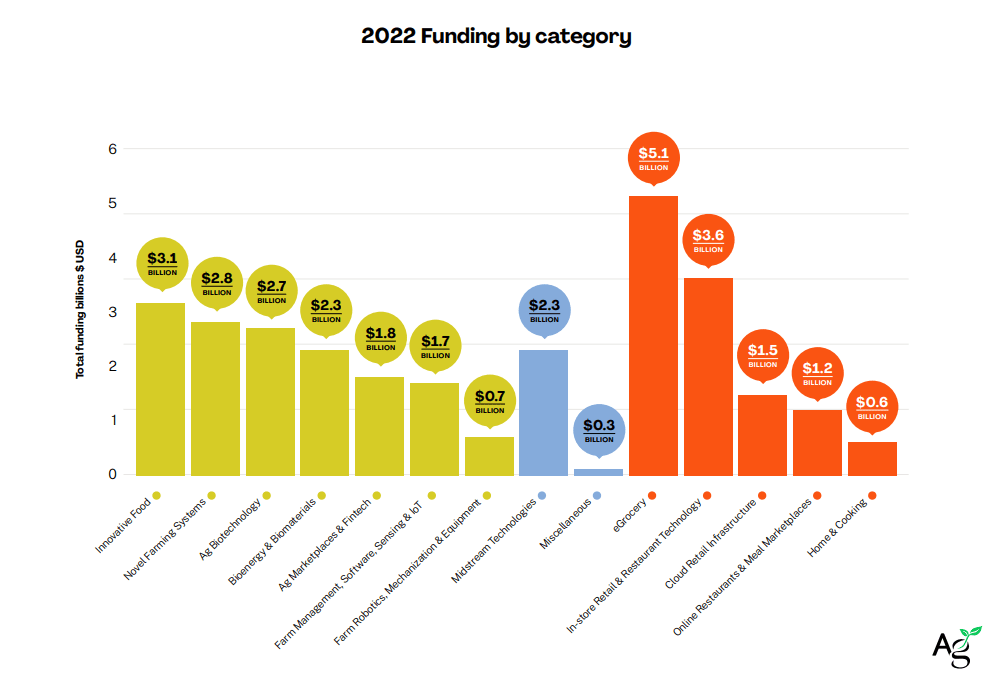 |
Après la pluie
de Arkhip Ivanovitch Kouïndji (1841-1910)
Meta Employees down
Bank Failure not rare
Perspective: There’s no good solution to dealing with China, by Amanda
Zaluckyj, The Farmer’s Daughter USA
.../...
Here’s the problem: we actually need China.
For all its faults, China is the single largest purchaser of U.S. agriculture
exports. It buys more of our crops than anyone else in the world. That’s
not necessarily surprising, because it also has the largest population
over every other country in the world.
And yet there again is the problem: China’s population is potentially
facing a collapse. Decades of a one-child policy has finally started to
show results, as the number of citizens dropped for the first time since
the 1960s (though Chinese families are now allowed up to three children).
Some estimates predict that its population could fall from 1.3-1.4 billion
down to 1 billion in 2050, and only 494 million by 2100. The result would
be calamitous for U.S. agriculture.
So whether it’s a threat to national security, our economic prosperity,
or international relations, what the Chinese government does impacts us.
It feels like there’s no good solution either. A China weakened by population
decline is good for national security, but not for economic security.
A growing and expanding China is good for our economy, but dangerous on
the world stage.
In short, this China stuff is complicated.
See
agdaily.com
Perspective: Kroger learns hard lesson about aligning with ag extremists,
by Amanda Zaluckyj
The national grocery chain pledged in 2016 that it would only sell eggs
produced by hens that weren’t caged by 2025. It made a follow-up announcement
pushing back that promise in 2022. The grocery chain cited supply-chain
issues, affordability, and not enough demand. Apparently, the number of
customers willing to pay higher prices for cage-free isn’t keeping up
with Kroger’s promise. So it now promises to sell 70 percent cage-free
eggs by 2030.
The store has good company though, as Walmart also broke its promise to
only sell cage-free eggs by 2025. As it turns out, low consumer demand
means producers aren’t switching to cage-free production. So there just
aren’t enough birds to meet Walmart’s pledge.
Here’s a lesson to the big food companies: It never pays to work with
extremist groups, whether they’re advocating for animal rights, the environment,
or any other hot-button trend. The proof is in the results. Mercy for
Animals is willing to spend a lot of money to hurt Kroger, despite the
fact that its ambitious goal just isn’t feasible.
.../...
See
agdaily.com
Perspective: The pressure on pollinator insects, by Jack DeWitt
You may have heard that bees in California are fish. In June 2022, a California
appeals court ruled that four species of bumblebees are to be categorized
as fish, allowing the California Fish and Game Department to put them
on the endangered species list.
California’s endangered species law, enacted in 1970, calls for special
protection for any endangered “bird, mammal, fish, amphibia or reptile,”
or in other words, anything with a backbone. So how do you get insects
— such as bees — from that definition? Seems the legislators had all seafood
in mind, because the law also includes clams, crabs, and lobsters, which
have no backbone. Soon, interpreters of the law included a snail, a shrimp,
and a crayfish, also backboneless.
The court says the legislative intent was to protect anything that lives
on land, sea, or air. So, the Fish and Game Commission’s proposal to protect
bumblebees by broadening the definition of “fish” to include insects was
allowed by the court.
Actually, this is not the first time bumble bees have been on an endangered
species list. The first one listed in the U.S. was the Rusty Patched Bumble
Bee (Bombus affinis), whose range includes the Midwest and Eastern states
plus Ontario. The U.S. Fish and Wildlife service listed it in 2017. Canada
listed it in 2012. Two bumble bees whose range includes the Western states
were listed by the U.S. in 2021 — the American (B. pensylvanicus) and
Franklin’s (B. franklin). Europe has also listed several bumble bees as
endangered.
.../...
See
agdaily.com
Clair de lune sur le Dniepr (1880) de Arkhip Ivanovitch Kouïndji (1841-1910)
The poverty of slavery, by Chelsea Follett and Robert E. Wright
Revisionist historians have recently revived an old pro-slavery talking
point: slavery made America rich. While emotionally compelling to some,
the argument doesn't hold up to scrutiny.
In the latest episode of The Human Progress Podcast, the economic historian
Robert E. Wright joins Chelsea Follett to discuss the history of slavery
and the many ways it damages societies and economies.
Robert E. Wright: I decided to write the book because progressive historians
have revived a pro-slavery argument from the past: that America would
not be rich without slavery. They are trying to set up a case for reparations
by saying, "Hey, look, we are wealthy today, but it's because we
had slavery in the past, and now it's time that we repay that debt."
It is completely wrong. My book, The Poverty of Slavery, looks not just
at the United States but at all systems of enslavement from the prehistoric
period up to the present, and I don't ever find an instance where slavery
leads to anything more than profits for slaveholders. It never helps overall
economies.
…/…
See video
See
humanprogress.org
My opinion (GW): I understand the reasoning well. Slavery has only ever
enriched the slaveholders. In France, for example, he made the fortune
of a few families from Bordeaux or Nantes, and in England from London.
But it seems normal to me that, the culprits having been dead for a long
time, our rich societies could replace these culprits.
The molecule that kickstarted life
For more than 15 years, scientists have been on a quest: create a functional
‘protoribosome’, a reconstructed version of the protein-building machine
that many think might have helped to kickstart life on Earth. The modern
ribosome is a key ingredient of life as we know it because it translates
genetic information into proteins. At its heart sits a small RNA pocket
that some think might be closest to what the very first ribosome looked
like. Now, there’s proof that some reconstructed protoribosome-like RNAs
can link amino acids — the first step to making proteins. Some scientists
say there are other ways for proteins to emerge, without a ribosome. But
others are already thinking about repurposing these simple machines to
manufacture new kinds of biomolecule.
See nature.com
How to tackle political polarization
Social scientists are seeking strategies for reducing hostility between
people who support different political parties. One real-world success
story: a joint political advertisement in which the opposing candidates
for Utah governor agreed to campaign respectfully. Extreme political polarization
has been associated with a rise in support for partisan violence, and
some fear it could eventually culminate in the collapse of democracy.
“That’s the lurking dark pit that we’re all trying to avoid,” says social
psychologist Kurt Gray.
See nature.com
Le Dniepr, le matin (1881) de Arkhip Ivanovitch Kouïndji (1841-1910)
Airline Food
Airborne approximately thirty minutes, on an outbound evening flight from
Glasgow, the lead flight attendant made the following painful announcement:
"Ladies and gentlemen, I am very sorry but it appears that there
has been a terrible mix-up by our airport catering service; we have 103
passengers on board and unfortunately only 40 dinner meals. I truly apologize
for this mistake and inconvenience."
When passengers' muttering died down, she continued...., "Anyone
who is kind enough to give up their meal so that someone else can eat,
will receive free, unlimited drinks for the duration of our 5 hour flight."
Her next announcement came 90 minutes later... "If anyone would like
to change their minds, we still have 40 dinners available...."
| |
The creation of this efita newsletter is spnsored by Acta Digital Services and its distribution by vitisphere.com
Please, contribute to the content of your efita newsletter, and advertise your events, new publications, new products and new project in this newsletter. Without your support, it will not survive!
Contact: Guy WAKSMAN
E-mail: guy.waksman(a)laposte.net
To read this newsletter on our web site
See Efita
The archives of this newsletter
See Efita
Do not miss the Virus Jokes in English and French
About the EFITA mailing list
You can use the efita moderated list (> 15000 subscribers) to announce any event / product / web site / joke (!) related to IT in agriculture, environment, food industry and rural areas.
If you want to subscribe a friend, please fill in his form.
If you do not wish to receive our messages, please fill in the following form...





